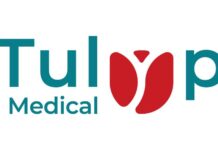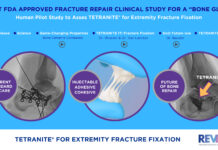
BURNABY, British Columbia– Dexcom, Inc. (NASDAQ: DXCM), the global leader in real-time continuous glucose monitoring (CGM), is pleased to announce that effective March 14 2022, the Ontario government will provide coverage for the Dexcom G6 CGM System through Ontario’s Assistive Devices Program (ADP) for people in the province living with type 1 diabetes who are over 2 years of age and meet coverage criteria.
“We’re pleased to be teaming up with the Ontario government to bring the Dexcom G6 CGM System to more Ontarians living with diabetes. The Dexcom G6 is a life-changing technology for people with diabetes that also brings significant value to the Ontario healthcare system. We are eager to continue this momentum and are committed to working closely with governments across Canada to ensure that every person living with diabetes has access to the care they deserve,” says Laura Endres, Senior Vice President and General Manager of Dexcom Canada.
Ontario joins six other provinces or territories, most recently Alberta, offering public coverage of CGM systems under provincial health plans. The Non-Insured Health Benefits Program also provides coverage for First Nations and Inuit children. With expanded public coverage for CGM, more people can access this standard of care technology, helping them to manage a life-long chronic illness more effectively.4
“Real-time CGM is an essential tool for people managing their diabetes, protection from high and low glucose events leads to more time spent in the target range, allowing people with diabetes to live fuller lives and prevent long term complications. During the pandemic I have moved to almost all virtual visits with my patients. The Dexcom G6 CGM System allows patients to share the trend data of their glucose levels, allowing me to track my patients even when I can’t see them in person and provide personalized care. Access to this technology will be critically important in the wake of COVID 19 as the health care system tries to recover.” — Dr. Ilana Halperin, Endocrinologist, Sunnybrook Health Sciences Centre
“We are pleased with this important step forward. Timely and affordable access to real-time CGM is a priority for JDRF as all people on intensive insulin therapy are entitled to the standard of care that can help them reduce A1C, increase Time in Range, reduce duration and incidence of hypoglycemia and improve quality of life.” — Dave Prowten, President and CEO of JDRF Canada
The Dexcom G6 CGM System includes a small, wearable sensor that measures glucose just below the skin; a transmitter to send glucose levels continuously and wirelessly to a display device; and a compatible smart device* or receiver that displays real-time glucose data to users without the need for calibration† or scanning. The Dexcom G6 CGM System provides users with real-time alerts, including a predictive Urgent Low Soon alert that can warn the user in advance of hypoglycemia — giving them time to take appropriate action before it occurs. With the use of the Dexcom Follow App‡, parents and caregivers can also access their loved one’s glucose levels remotely and be alerted if they are going out of their target glucose range.
In 2021, the Diabetes Canada Clinical Practice Guidelines review committee updated its recommendations for glucose monitoring, stating that real-time CGM (rtCGM), like the Dexcom G6, should be used by individuals with type 1 diabetes treated with basal-bolus insulin injections or an insulin pump in order to reduce A1C and increase time in range, reduce duration and incidence of hypoglycemia and, in adults, improve quality of life.5 The guidelines also state that adults living with type 2 diabetes using basal-bolus and not at target may use rtCGM to reduce A1C and duration of hypoglycemia.6





